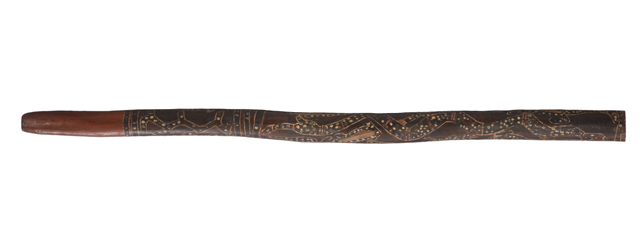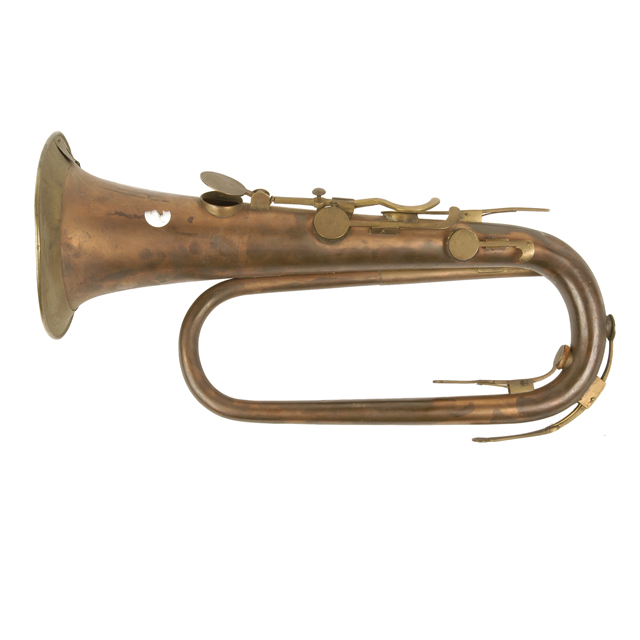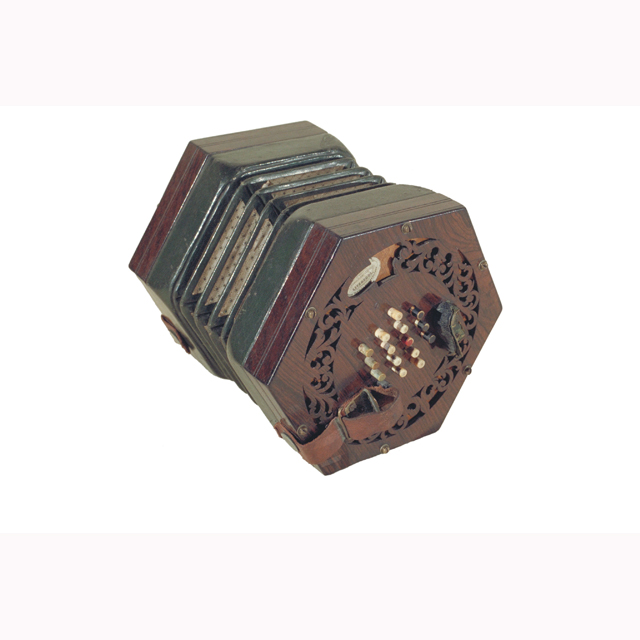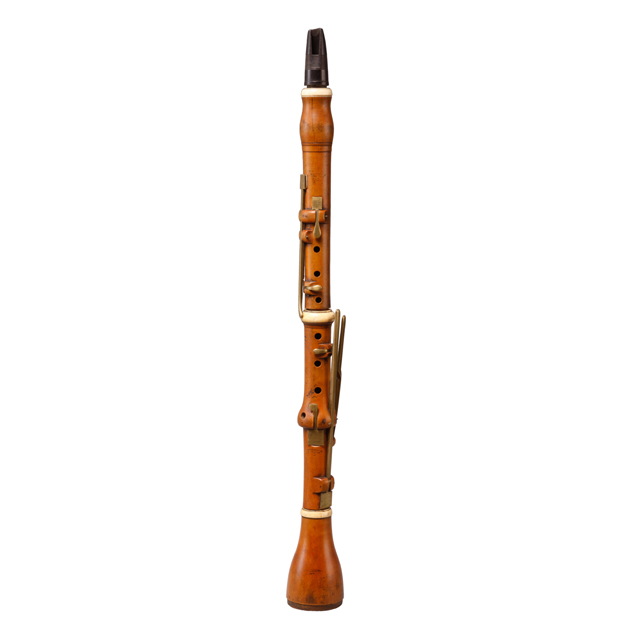
Didjeridu, end-blown trumpet. Hollowed out branch. Straight but with a slight double bend about two thirds of the way up its length. Mouth hole has no wax or other adornments but is bevelled on the outer surface to a very thin rim. Outside otherwise roughly even diameter throughout, but the internal bore expands unevenly with an rough internal surface. Outside surface is varnished with painted decoration starting approx 20cm from mouthpiece to bell. Decorated section is painted black and consists of stylised depictions of frogs, lizards and snakes, outlined in white and filled with white spots and a brown and white cross-hatched design.
Didjeridu with painted decoration, Northern Territory, Australia The didjeridu is a musical instrument that was originally made and played for both ceremonial and recreational purposes throughout much of northern Australia. Like the boomerang, its distribution is now worldwide. Traditionally, didjeridus were made from branches or small trunks of various Eucalyptus trees; the log is left out for wood-eating termites to consume the inner heartwood, but aboriginal craftsmen have long taken advantage of the fact that Eucalyptus trees store a poison in their outer sapwood that makes it inedible to the termites. Basically a wooden trumpet, the didj works by the player setting up a harmonic vibration in a column of air inside the tube. The skilled didjeridu player uses the same technique of ‘circular breathing’ used by some of the great jazz trumpeters: as the player's lungs near empty, he uses a particular technique of closing his throat and breathing in through his nose while continuing to squeeze air out of his mouth. Repeated in short bursts, this technique allows the player to refill his lungs without interrupting the instrument. This 1970s example was produced for the tourist market, but it is traditionally made with termite assistance, and decorated in a way that anticipates the best kind of didjeridu-painting today. Wood, acrylic paint. Given by Mrs F. King.


































































































































































































































































































































































































































































































































